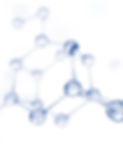SNO-pod™ technology.
A sustainable solution.
Nitric oxide (with a chemical formula of NO) is one of the most notable and versatile signaling molecules produced by practically every cell in our bodies for enumerable, beneficial biological activities.
As a consequence of its importance in neuroscience, physiology, and immunology, NO was proclaimed "Molecule of the Year" in 1992; and elucidation of its role as a cardiovascular signaling molecule led to the 1998 Nobel Prize.
Its mechanisms of action are well-studied: It is a profound vasodilator (increases blood flow); it is anti-microbial and anti-fungal; and it speeds wound-healing.
Humans lose the ability to produce and utilize NO as they age. This decline is progressive and is a major contributor to age-related health issues, particularly those affecting the cardiovascular system. By age 40, some studies suggest that the body's natural production of nitric oxide can decrease by as much as 50%, and by age 60, it may drop by up to 75%.
Because it is an unstable gas with a half-life on the order of seconds, however, it is challenging to administer NO exogenously with any sustained impact. As such, NO has fallen far short of its potential.
Until now.
The scientists at Einstein College of Medicine, and then at Zylo, and now at Finch, have developed the SNO-pod technology to overcome the NO bioavailability challenge. SNO-pods are highly engineered amorphous silica particles designed to sustainably release NO over a 24+ hour period (and, in some cases, for a week or more).
SNO-pods have varied therapeutic applications, including wound-healing, burns, acne, alopecia, sinusitis, onychomycosis (nail fungus), erectile dysfunction, hemorrhoids/anal fissures, and diaper rash. It should be noted that standard pharmaceuticals such as nitroglycerine and amyl nitrite are precursors to nitric oxide.

